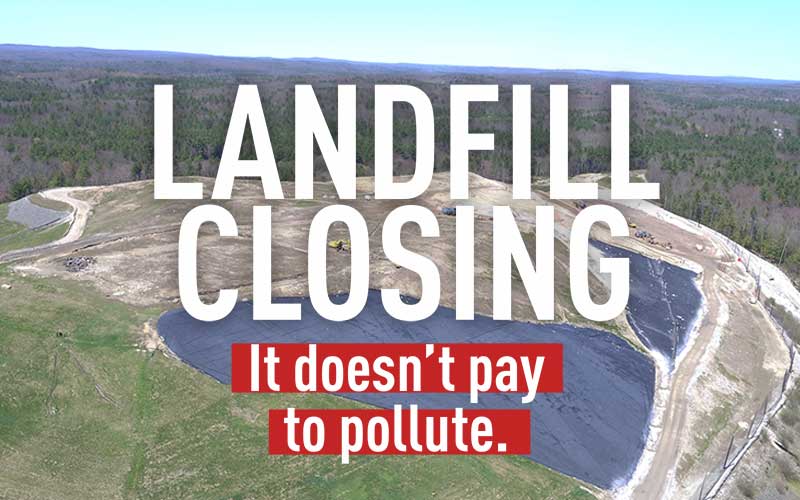
Casella Waste has abandoned its plans to expand Massachusetts's largest landfill and will close it altogether by the end of 2018.
Last week, I learned that Casella Waste is abandoning its plans to expand the Southbridge Landfill – and it will close the facility entirely by the end 2018. This is a major victory for the people of Southbridge, Charlton, and Sturbridge, for whom the landfill’s toxic pollution has become a major burden. It’s also a significant step in CLF’s campaign to shut down landfills and incinerators in Massachusetts and across New England.
Casella Waste Throws in the Towel
On Wednesday, August 2, John Casella, Casella Waste’s CEO, delivered the company’s quarterly financial report. In it he said that, “given the innumerable regulatory and political roadblocks we have faced over the last three years as we have worked to develop additional capacity at the site, and expect we would continue to face, we do not believe that further development at the landfill site will generate an adequate risk adjusted return.”
As Mr. Casella’s statement underscores, when citizen action drives enforcement of environmental regulations, polluting facilities are no longer profitable and they get shut down. Given the powerful grassroots opposition to the continued operation of this and other landfills, I would like to declare the closing of the Southbridge Landfill the beginning of the end of the landfilling and incineration of solid waste in New England.
Who killed the Southbridge Landfill? Local Activists, Legal Experts, and the Landfill Itself
In 2008, Casella was allowed to start dumping up to 405,600 tons of municipal solid waste a year at the Southbridge Landfill. Local residents and advocates appealed, organized, and complained about the odor, the noise, the traffic, and the pollution, but we weren’t able to stop it. We got involved too late and knew too little. However, all that work laid the foundation for this victory nine years later.
In 2015, Casella began the process to expand the landfill into Charlton and Southbridge, and to build a whole new landfill to the south of the existing facility. If approved, Casella would have been allowed to operate for another 10 years and bury more than four million more tons of waste in Charlton and Southbridge.
We were ready. We got involved early and we began fighting immediately. Citizen networks were already in place to mobilize people to attend meetings, submit comments, and contact the Massachusetts Department of Environmental Protection and their town- and state-elected officials. The towns and nonprofit environmental advocacy organizations were poised to recruit lawyers and hydrogeologists to take action. And citizens were able to document that the landfill had been leaking toxic contaminants into the environment for more than 20 years.
And then the dominoes started to fall. In February, in an unprecedented decision, the Department of Environmental Protection denied Casella’s request for an initial permit for the second phase of its expansion plan. And in June, the landfill faced another setback when the voters of Southbridge rejected by more than 60% a nonbinding ballot initiative in support of Casella’s plans to expand the landfill.
Ultimately, no one action or victory led to Casella’s momentous decision last week. It was the collective work of people like you and me who came together and stood up to say, “We’ve had enough. We’re not going to allow this landfill to hurt our communities and our children anymore.”
Celebrating Victory and Preparing for the Work Still to Come
While much work remains to be done to best safeguard our communities’ public health and environment, the people of Southbridge, Charlton, and Sturbridge have prevented another four million tons of waste from being permanently buried near our homes. We will have to deal with the fallout from the landfill for the rest of their lives – contaminated drinking water, lingering odors, and leaks don’t disappear just because the trucks stop dumping waste there. And the state and the local community must deal with the business of capping the facility, stopping gas and leachate from the landfill from doing further harm, and holding Casella responsible for remediating this mess.
What’s more, Southbridge, while Massachusetts’s largest landfill, is only one of 18 municipal solid waste and incinerator ash landfills in the state. And there are another seven solid waste incinerators in the state. All of these landfills and incinerators threaten their host communities with pollution and contamination. CLF isn’t going to stop until we’ve ushered in a new era of zero waste for New England.



